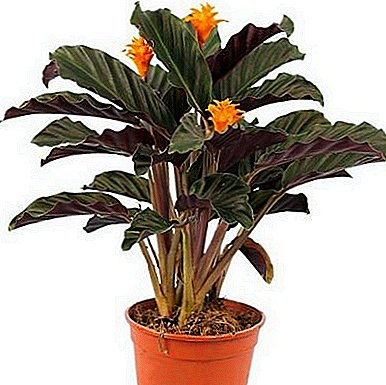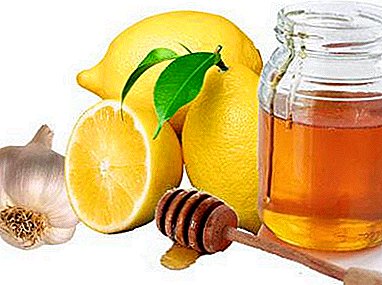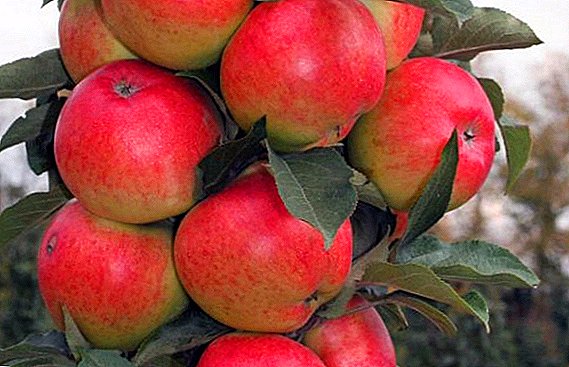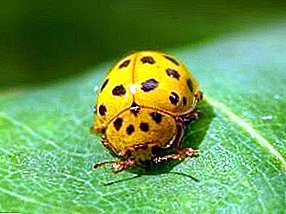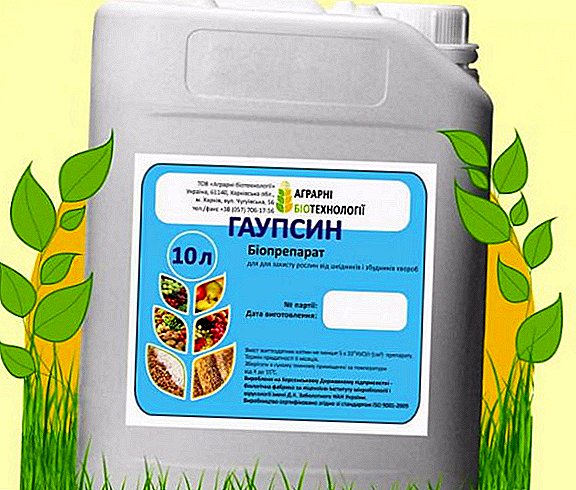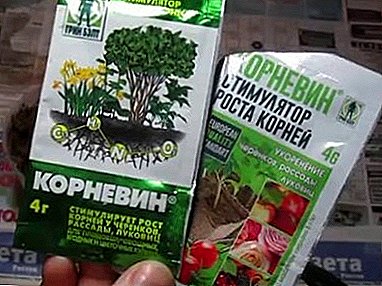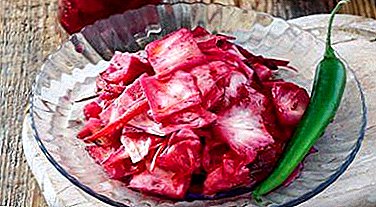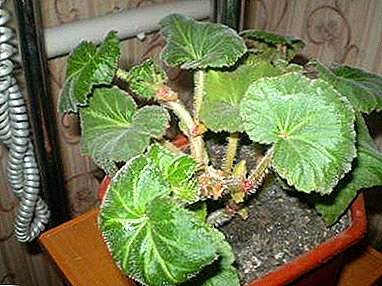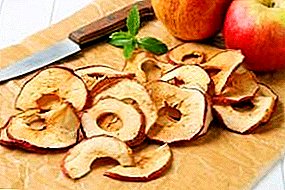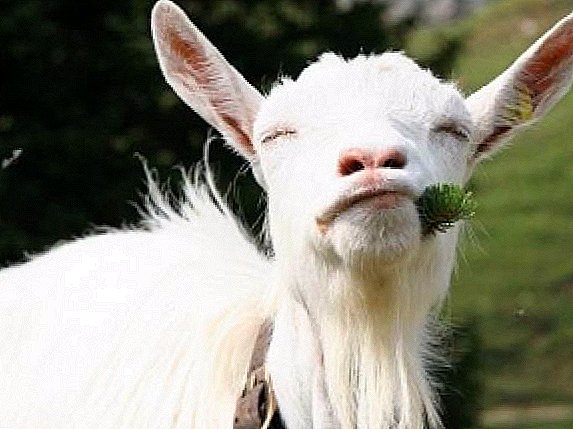
Goats settled on our economic yards for a long time.
These animals are valued for their milk, since not everyone has the opportunity to buy and maintain a cow, but the goat costs less and does not require much space.
But, like the cows, goats come in different directions: dairy, meat, wool and mixed.
Better before buying an animal to determine the purpose for which you are going to grow it.
Zaanen breed

The homeland of this goat is Switzerland, namely the Zaanen valley, where these animals are actively bred to this day.
Zaanen breed is considered the best among all dairy breeds and combines not only high productivity, but also excellent health and longevity.
Zaaneysky goats are the largest animals of this species. Adult goat can weigh 40 - 60 kg, and the goat - 75-80 kg. The torso of these goats is elongated, the legs are long, and the chest is voluminous.
The head is of medium size, the muzzle is slightly extended forward, the ears are of medium length, the neck is elongated, there may be "earrings". The coat is white or cream colored, rather short.
Udder from goat goats bowl-or pear-shaped. Some individuals have horns and some are missing. All purebred goats of this breed have horns, but in the process of breeding some animals began to be born with a goat.
Productivity zaaneyskogo goats is not less than 6 kg per day. The milk of these animals is very tasty and nutritious, and most importantly - without an unpleasant smell.
Some goats can give milk with a sweet taste, but the main thing is that the milk from any zaanenka has a rich creamy taste, no unpleasant taste, it is very light.
Goat breeds zaaneiskoy breed quickly enough. Already one-year-old animals almost completely end up developing, and if the goat is well fed, it can be covered by 10 months.
It is necessary to keep these goats in the same way as animals of other breeds. The room in which animals spend the night should be warm in winter and summer. Goats need to be well fed with a variety of foods, put on grazing in good weather. Then the animals will not get sick and will regularly give a lot of milk of excellent quality.
Nubian breed

The second name of this breed is the Anglo-Nubian goat, because at one time the breeders from England slightly changed these African animals, and it is the modified goats that are bred today.
Direction Nubian goats - meat and dairy. They are as large as those of Zaane. Goat can gain 54 - 56 kg of live weight, and the goat - 67-70 kg.
Distinguished Nubian breed of goats long and durability of their legs. The body of these animals is thin and long. Udder large, nipples also. The neck is long, thin.
Nubian goats can be born as komolyami, and with horns, but with their presence there is a significant difference in length: the goats of the horn are small or medium length, and the goats are long.
The legs of these goats are humpback, their ears hang down. The body is covered with short shiny hair of different colors (black, brown, white, spotted). Temperament have them calm, they are very graceful in their movements, they love affection and attention.
Milk Nubian goats give a very good, nutritious (fat content of more than 5%), has a pleasant creamy taste.
In general, the milk of Nubian goats is very similar in composition to the breast milk of the mother. Milk is also devoid of any unpleasant smell. A goat that gave birth 2 or more times, on average, gives at least 6 liters of milk per day.
Nubian goat breed needs an excellent diet in which fruit must be present. Feed the animals need strictly on the clock. It is also necessary to provide goats with plenty of water.
Alpine breed

This goat is home to Switzerland. Initially, these animals were kept on pastures in the Alps, hence the name of the breed.
The color of wool in Alpine goats can be the most diverse - and white, and black, and light gray, and dark brown. But all animals have a general characteristic in color - the muzzle, ears, lower abdomen and legs are painted in dark colors to the knee joint, and the rest of the body is gray-brown.
Alpine goats krupnovaty, but, despite the size, quite graceful. The body is strong, the head is small, light, shortened in length.
The horns are flat-oval, but sometimes goats are born with congenital cone. Ears are medium, erect. The neck is shortened, the sternum is voluminous and deep. The back forms a straight line. In the area of the sacrum, the body sags down, and the sacrum is short and narrow.
Legs are small and thin. The hooves are covered with a very strong cornea, but soft tissues are elastic, which creates excellent cushioning. The hair is short, but in the hips and on the back it grows longer than on the rest of the body.

An adult goat weighs, on average, 60 - 63 kg, and a goat - 76 - 79 kg. A goat can give birth to more than 2 kids at a time. Milkiness is also high, for lactation one goat gives 750 - 900 kg of milk.
Some animals can produce up to 1200 - 1600 kg of dairy product. Duration of lactation is about 280 - 350 days (9 - 12 months).
Milk fat content ranges between 3.5 and 5.5%. The milk itself is pleasant and delicate in taste, used to make various products, often cheeses. Indicators of meat productivity are also high.
The temperament of these goats is very calm, they respond well to gentle treatment. But these animals are rather stubborn, and in the case of herd content they show egoism towards the rest of the living creatures. Sometimes they repel other animals from the feeders, but they eat enough.
They are unpretentious to the conditions of detention and feeds, they quickly get used to the new conditions of life, are very hardy and tenacious. Can be kept in the herd.
Angora breed

This breed of goats was bred in Turkey, and it was named after the capital of Ankara, Angora.
The main suit of the Angora goats is white, but there have been cases that the wool was gray, black or silver. This breed is universal, that is, it gives meat, and milk, and wool.
The body of the Angora goat is short, and the animal itself is loose. The head is small, in the area of the nose there is a crook. The goat's horns are small, thin, bend back. At the same goats, the horns are larger, more powerful, spiral-shaped. The neck is thin and short. Animals of both sexes have a beard.
Ears large, long, droop down. Sternum of small volume, small width. The line of the back is straight, but sags in the sacrum area.
Legs are small, but powerful, with strong hooves, often correctly set.
The skin is thin. The whole body is covered with a rather long, thin, but thick coat. It can be curly (mohair) or wavy.
The sun is very shiny (luster shine). The average length of one strand is 20–35 cm. The wool of the Angora goats is easy to handle, it is elastic and durable, uniform and semi-coarse in structure.

In weight, goats gain not much - 30-50 kg. But the goats can "eat up" to 85 kg of body weight. The fecundity of goats is very high. (100 - 140%).
For half a year lactation, one goat gives 70 - 90 kg of milk. Meat yield is good - 40-45%. Meat is fatty, but juicy, it smells nice. From one animal you can get 4-6 kg of wool, the output of which is 65 - 70%. Mohair received a very wide range of applications - from fabrics to gloves and socks.
Angora breed goats are unpretentious in caring and feeding. They are not afraid of any heat or cold. These animals can be almost all year round in the pasture.
If you are late with a haircut, the animal will begin to fade, from which it loses a lot of valuable wool.
These goats should be protected as much as possible from strong changes in the external environment, and especially from drafts.
Sometimes there can be an admixture of awn (1-3%) in mohair, from which the quality of mohair drops.
If animals live in a changing climate, but their fertility and wool quality will decrease. Angora goats have poorly developed maternal instinct.
It is also interesting to read about the construction of a goat barn.
Boer breed

Boer goat comes from South Africa. It was obtained by crossing European and Indian breeds with local wildlife. This breed is one of the most popular in the field of meat direction.
Animals are born mainly with a white body and brown-brown head, but there are also variations in the form of spots on the limbs, tail and body.
Sometimes you can even meet fawn and black Boer goats.
Animals are dense in design, medium in size. The head is large, the forehead protrudes forward, the profile is curved. The horns are medium in length, very massive, widely spaced. The ears are long, in size large, drooping.
The neck is large, compacted, broad shoulders. The chest is voluminous, deep, well developed. The back is wide and long, forming a straight line. Udder with four, not two, nipples. Legs powerful, strong, strong hooves. The coat is short. Muscle mass is high.

In adulthood, a goat can weigh 80 - 90 kg, and a goat - 90-110 kg.
Fertility is very high, for 2 years a goat can give birth 3 times. The first time a goat gives birth to one goat, and then two.
When slaughtering a single animal, 54 - 57 kg of meat can be obtained. Milkiness is bad, all milk is consumed by kids (2 - 3 kg). The meat is very high quality, due to the large number of muscles is considered a dietary product. Plus, it is very gentle, and the smell reminds veal. In the course are also the skins and wool of the drill.
Keep the master's goats can be in any more or less good conditions. To feed this breed is also not very demanding. They are not important climatic conditions and temperature, they are very quickly get used to even the most severe climate.
This animal will be enough to feed even a poor pasture on which it is impossible to graze cows. Diseases almost do not affect the Boers, goats are very hardy. Maternal instinct in females well developed. They are easy to get in touch with people, docile and calm.
Mountain-Altai breed

This breed was bred in Altai as far back as 1944 when cross-bred Donsky and Angora goats with local goats were bred.
The main part of the goats of this breed is black, but sometimes there are also animals with white fur. The animals themselves are medium-sized, but well-built, the constitution is strong.
The constitution is proportional. The backbone is very well developed, lightweight. Legs strong and strong, set correctly, covered with short hair. The hooves are dark, very strong and strong. Much muscle mass.
The wool of these goats consists of gray down (75%) and black guard fibers (25%). The down is very high quality, soft and silky to the touch, elastic, very durable, long.
Adult goats weigh no more than 50 kg, while goats weigh no more than 75 kg. The goat, often, give birth to one goat, per 100 queens - 110 - 150 kids. Twins are very rare.
During lactation, you can collect 90 - 110 kg of milk, per day the yield is 500 - 550 grams. The meat is very high quality, tasty and fragrant. Meat yield is 45 - 55%. If you take only meat in which there are no bones or lived, then the output will be 75%.
From young stock, you can collect 300-400 grams of down, but from adult goats and goats, 500-700 and 700-1000 grams, respectively. The down of this breed of goats is widely used for the manufacture of various products, even downy shawls. Leather is also used.

Mountain-Altai goats are famous for their simplicity and to feed, and to the conditions in which they are kept. Graze in their pastures all yearand even in the steppe, where there is little vegetation, which is typical of the Altai Mountains.
Mountain-Altai goats are well developed, very hardy, known for their excellent health.
That is why they quickly get used to even the very volatile and harsh climatic and environmental conditions.
The only thing that can spoil these animals are ugly horns, which can be crossed or rudimentary.
It is very profitable to keep a goat on the farm - here you will get both milk, meat, and wool. Therefore, if you buy this animal, then you will not exactly regret your decision.


